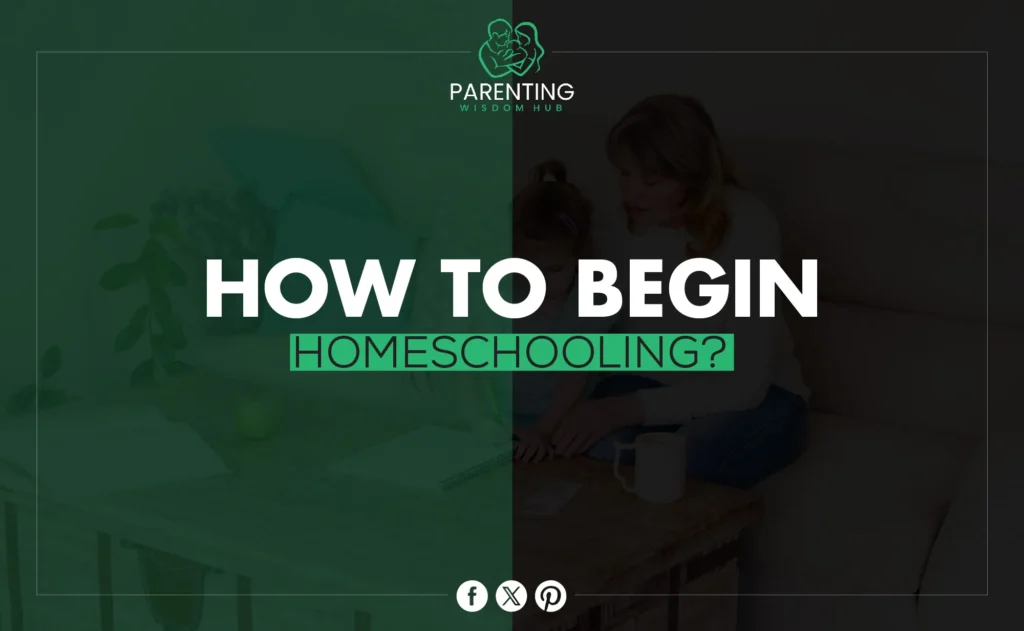Introduction
Considering homeschooling your kid but not sure where to start? You have company. Learning how to homeschool might be daunting as more families choose it. Do not worry! This detailed handbook will help you throughout.
Homeschooling lets parents customize education for their children’s needs and interests. However, transitioning from conventional to homeschooling may be difficult without help. This essay covers all you need to know about homeschooling, including curriculum selection, legal requirements, and community resources.
The Basics of Homeschooling
Parents educate their children at home in homeschooling. It customizes learning to each child’s speed and manner. Homeschool 101 entails knowing.
Homeschooling is popular because it gives parents more freedom to meet their child’s needs and build on their skills and flaws. You can focus on what it means to your child when you teach them instead of sending them to a regular school. They can change the lessons to fit their hobbies, like adding more art projects, learning more about STEM topics, or improving their speaking skills.
Homeschooling has many benefits, but it takes dedication, planning, and a readiness to change. It’s important to think about whether or not homeschooling fits with your family’s lifestyle and whether you’re ready for the tasks that come with it. Remember that both you and your kids are always learning when you homeschool.
Legal Requirements and Guidelines
Know the laws in your state or nation before homeschooling. Compliance with varied laws enables a pleasant homeschooling experience. Some areas have curriculum guidelines, while others need notification to local education authorities.
The first thing you should do is look into the rules that apply to your state. You might have to fill out a desire-to-teach form or keep track of your child’s progress. Websites like the Home School Legal Defense Association (HSLDA) can help you with the law and give you useful information.
Staying up to date on the law’s requirements not only helps you follow it but also helps you plan your schooling year well. It also makes sure that you have the right paperwork in case your child wants to go back to regular schooling or college after high school.
The Right Homeschool Curriculum
One of the most important choices you’ll have to make is what homeschool program to use. There are so many choices that the process can seem overwhelming. But focusing on how your child learns, how well you can teach, and the tools you have access to can make the job easier.
The market provides organized, unschooling, and online curriculum. Each has advantages and disadvantages. While unschooling encourages creativity and inquiry, structured programs give clear boundaries and evaluations.
Before making a decision, think about the different education choices. Go to homeschooling events, join groups, and ask other teachers for advice. Also, trying out sample lessons can help you figure out what works best for your family.
Setting Up Your Homeschool Environment
For homeschooling to work, you need to make sure your home is a good place to learn. You don’t have to have a classroom, but having a set place helps with routines and staying on task. This area should be cozy, well-lit, and fully stocked with everything you need.
Encourage curiosity and participation using learning tools. This might contain books, scientific sets, art tools, and instructional games. Remember to make learning fun and rewarding for your youngster.
You need to be flexible. Some families use the whole house to learn, like the kitchen for science projects or the living room for reading time. Figure out what works best for your family’s daily schedule and the way your child learns.
Creating a Homeschool Schedule
A regular plan gives things order and makes sure that all subjects get enough care. One of the good things about homeschooling is that you can change the plan to fit the needs of your family and your child’s learning style.
Start by making every day and weekly goals that you can reach. You might want to include a mix of key topics and hobbies outside of school. For instance, math and language arts can be taught in the mornings, and art or physical education can be taught in the evenings.
Don’t be afraid to change the plans if you need to. If your child is interested in a project, give them time to learn everything they can about it. Remember that education isn’t about how many hours you spend doing it; it’s about how well you learn.
Finding and Utilizing Community Resources
Homeschooling doesn’t mean being alone. Joining parenting co-ops and groups in your area can help you and give you useful tools. People can meet new people, do things with a group, and learn from each other in these places.
There are often events just for homeschoolers at libraries, museums, and community centers in your area. Use these resources to add to your lessons and give your students a variety of ways to learn. Workshops and field trips are great ways to make learning more real.
You can also get a lot of help from online groups. There are groups on sites like Facebook and Reddit where parents share tips, ideas for lessons, and support. Working with these groups can give you new ideas for how to teach and new ways to look at things.
Balancing Homeschooling with Family Life
Homeschooling requires family collaboration and balance. Finding a balance between homeschooling and personal time is crucial. A strong family dynamic requires limits and open communication.
Create routines that balance school and home. Sharing duties and everyday responsibilities provides kids with life skills. Regular family meetings may address schedules, expectations, and concerns.
Self-care is just as important. It’s important for parents to take time to recover. A healthy mind is good for both you and your child as you teach. It can be used for hobbies, exercise, or just resting.
Overcoming Common Homeschooling Challenges
Homeschooling has its problems, just like any other job. It’s normal to run into problems, like having questions about your ability to teach or having trouble dealing with family rivalry. Knowing about these problems and having plans for how to deal with them can help the shift go more smoothly.
When you start to question, remember that learning with your child is an important part of the process. Use online tools, go to workshops on homeschooling, and look for help from teachers who have been doing it for a while. Working with others to learn can be both helpful and fun.
Another common problem is disagreements between siblings. Setting clear rules and habits can help keep interruptions to a minimum. Get brothers to work together on projects, which will help them understand and cooperate with each other.
Incorporating Technology into Homeschooling
Technology can help a lot with parenting because it gives you access to a lot of knowledge and learning materials. Using technology to help your child learn can be as simple as downloading educational apps or signing up for online classes.
Find tools that fit with the goals of your program. Free classes and fun learning can be found on sites like Khan Academy, Duolingo, and Coursera. You can also bring things to life in an interesting way through virtual field trips and films.
But balance is very important. Make sure screen time is controlled and used for a reason. To give students a well-rounded education, encourage them to do things offline and learn by doing.
Success Stories and Expert Insights
Experiences from real life can teach us a lot and give us hope. Take the case of the Johnson family, who switched from public school to homeschooling. At first, they felt swamped, but then they found the joy of individual learning and how family projects brought them closer together.
Experts emphasize the importance of flexibility and adaptability in homeschooling. “Every child learns differently,” says Dr. Emily Turner, a homeschooling advocate. “It’s essential to tailor your approach, celebrate small achievements, and remain open to change.”
Connecting with fellow homeschooling parents can inspire creativity and persistence. Their experiences serve as reminders that challenges are temporary and growth is ongoing.
Taking the First Steps Towards Homeschooling
Starting to homeschool is a big choice that needs careful thought, planning, and dedication. But if you and your child have the right tools and help, it can be a rewarding and educational experience for both of you.
Start by learning about the rules in your area, looking into different education choices, and making a schedule that works for your family. Get help from parenting groups and professionals, and keep in mind that being flexible will help you with this.
You could get more information by joining parenting groups and going to workshops. If you want to teach your kids well, you need to be interested, committed, and ready to learn together.
Conclusion
Homeschooling allows you to provide your kid with a tailored and meaningful education. Transitioning may be difficult, but the advantages are great—from academic improvement to stronger family ties.
Remember, you’re not alone in homeschooling. Countless families enjoy exploration and learning on this trail. Determined and supported, you can give your kid an excellent education that encourages them to succeed.
Use more resources and talk to other homeschoolers to increase your knowledge and confidence. We can change schools one household at a time.


